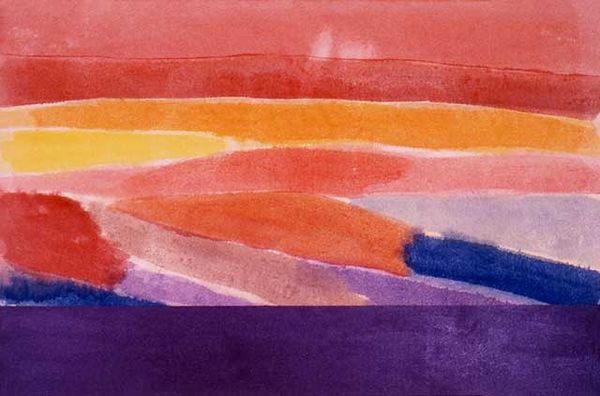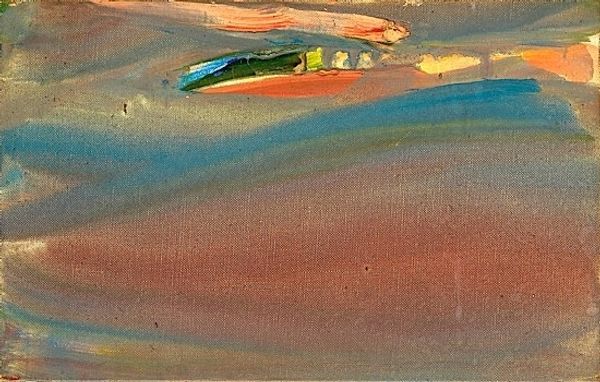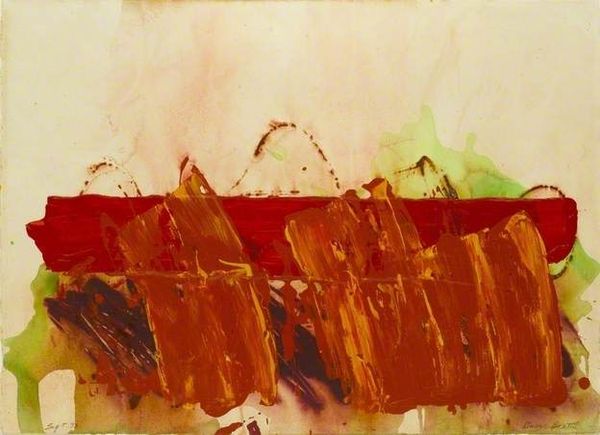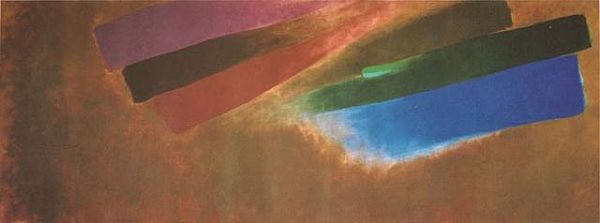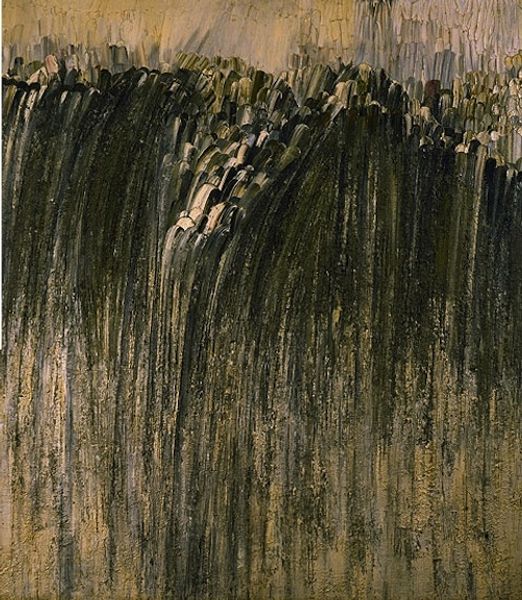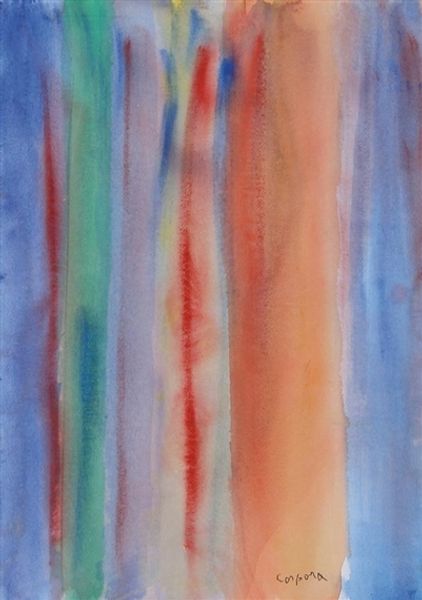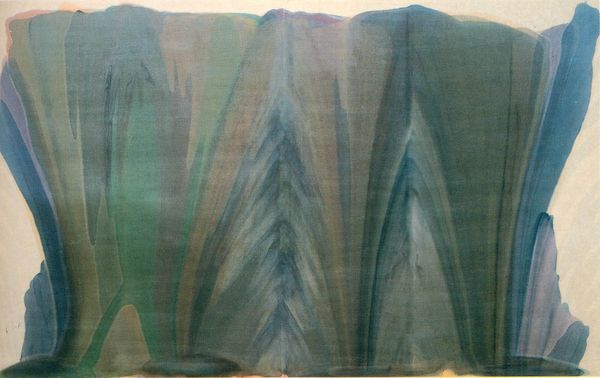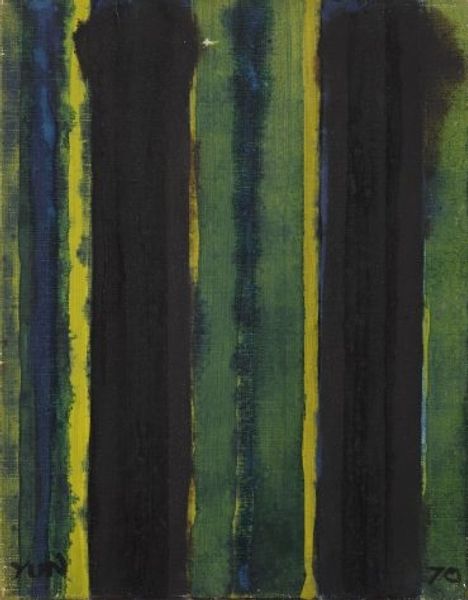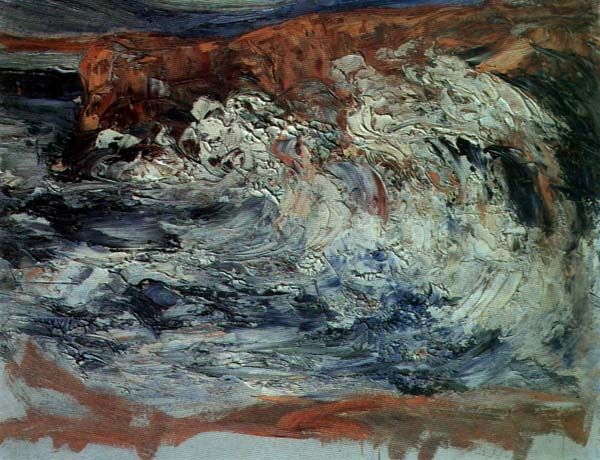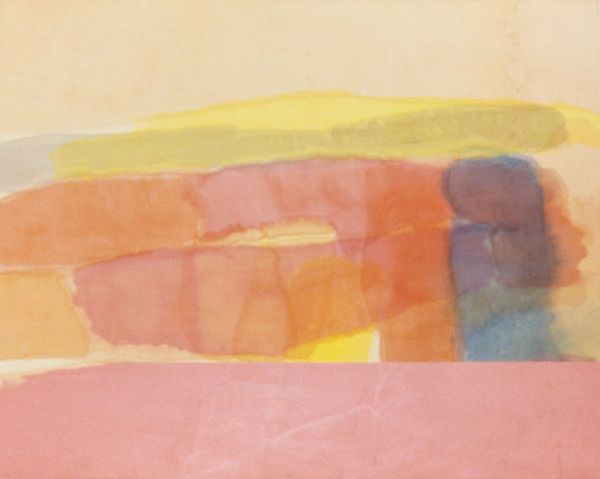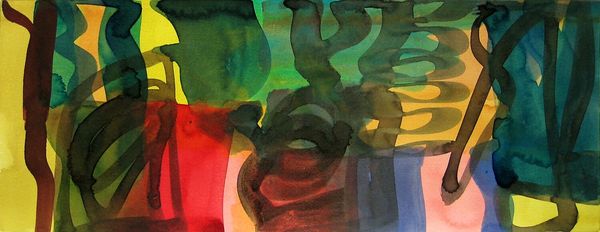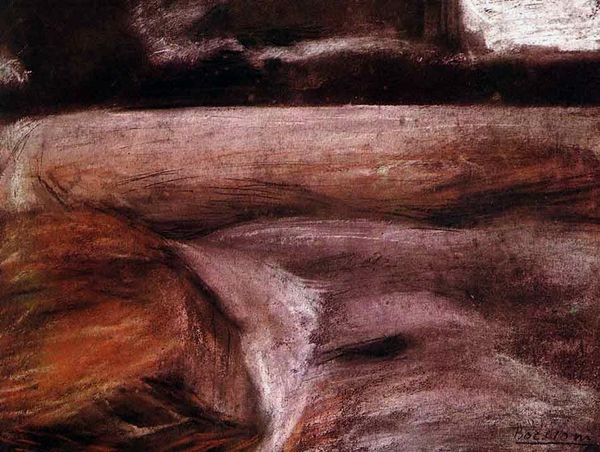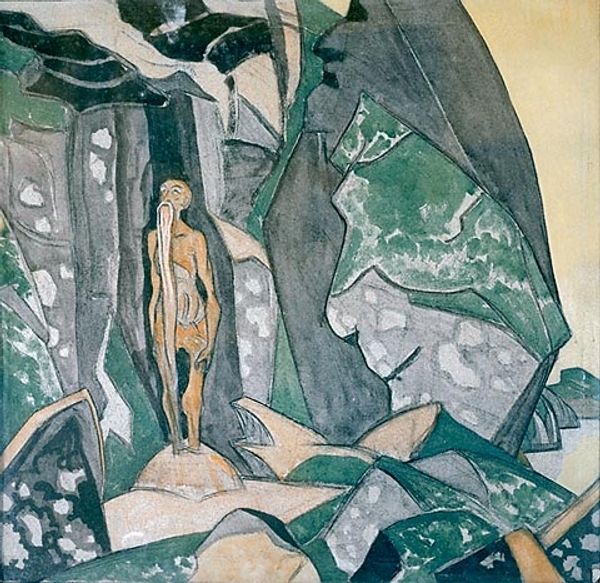
stain, acrylic-paint
#
abstract-expressionism
#
washington-colour-school
#
abstract expressionism
#
stain
#
acrylic-paint
#
acrylic on canvas
#
abstraction
#
allover-painting
Copyright: Morris Louis,Fair Use
Editor: So, here we have Morris Louis's "Iris" from 1954, made with acrylic paint on canvas using a stain technique. It’s surprisingly…earthy, despite the vibrant colors peeking through. I'm interested to learn about your interpretation. What emotional language do you perceive through his symbolism? Curator: This artwork pulsates with emotionality embedded in the stain technique itself. It’s a visceral unveiling – Louis allows the paint to saturate the canvas directly, bypassing the gestural hand, becoming pure color and feeling. Do you notice how the colors bleed into each other, creating veils and translucent layers? Editor: Yes, I do. The overlapping colors create depth, but there isn’t any real form within those translucent layers. Curator: Precisely. Consider how color acts as a symbolic bridge, reaching back through time, from cave paintings to Byzantine mosaics to the stained glass of Chartres. These hues hold deep associations in our collective memory. Editor: Is he referencing those traditions deliberately? Curator: Perhaps not consciously, but by using pure color, the artwork evokes a primordial sensory experience. The very act of staining echoes the action of prehistoric art making when early artists stained cave walls with ochre and charcoal. In "Iris," there’s an emotional link that resonates even now. What associations come to mind when you contemplate how "Iris" impacts viewers now and potentially in the future? Editor: It makes me think about how some symbols resonate over centuries while meanings change and evolve. I thought abstraction was divorced from representation, but this feels rooted in something very human. Curator: Indeed. We must explore and value the interplay between artistic experimentation and the human search for continuity. Thank you for prompting these insightful reflections. Editor: Thank you. I now recognize an abstraction's potential as a powerful, lasting symbolic artifact.
Comments
No comments
Be the first to comment and join the conversation on the ultimate creative platform.
